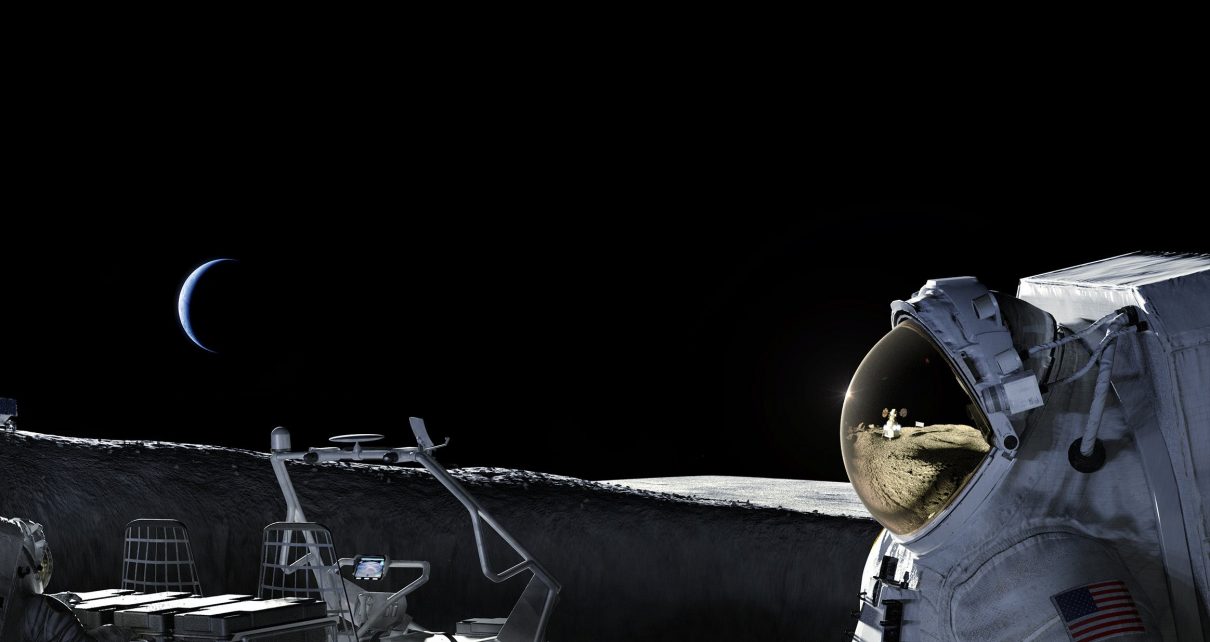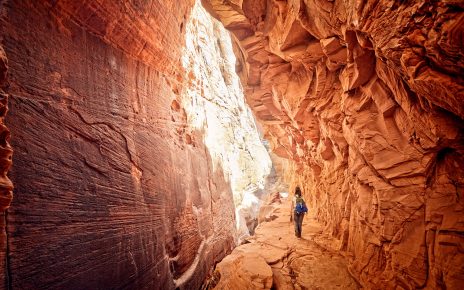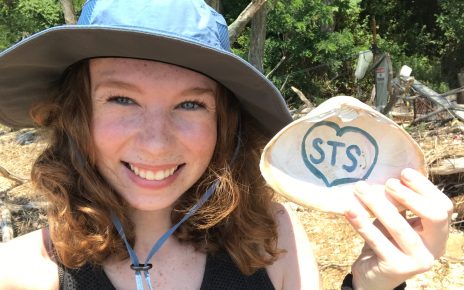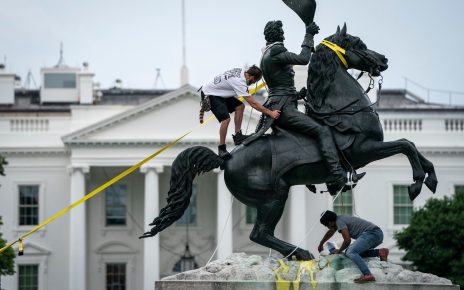On August 4, 1972, the sun unleashed an incandescent whip of energy from its surface and flung it toward the planets. It was accompanied by a seething cloud of plasma called a coronal mass ejection, which traversed the nearly 150 million kilometers between sun and Earth in just more than half a day—still the fastest-known arrival time for such outbursts—to briefly bathe our planet in cosmic fire.
Earth’s shielding magnetosphere crumpled and shrunk by two thirds, sending powerful geomagnetic currents rippling through the planet. Dazzling displays of “northern lights” stretched down to Spain, and overloaded power lines strained as far south as Texas. Off the southern coast of Haiphong, North Vietnam, the seas churned as the celestial disturbance prematurely detonated some two dozen U.S. Navy sea mines. The geomagnetic storm is one of the most violent solar events in recorded history, certainly the most violent of the space age.
The astronauts of Apollo 16 had been home about three months from their lunar foray, and those of Apollo 17 were still preparing for their December launch. The fact that the solar outburst happened between the penultimate and final crewed moon missions was simply a matter of chance. If the members of either crew had been in space during the solar storm, especially if they had been traversing the portion of the “cislunar” region between Earth and the moon that lies outside the magnetosphere, they would have been exposed to a potentially deadly dose of radiation.
We got lucky in 1972. And in terms of space-based hazards, that luck has largely held throughout humanity’s off-world excursions. To date, the only humans to actually die in space were the three cosmonauts of Soyuz 11, who asphyxiated because of faulty hardware as their spacecraft began its descent to Earth. Yet despite what most estimates would seem to consider a near-sterling safety record, today the prospect of venturing back beyond low-Earth orbit somehow seems more daunting—more dangerous—than it did when the Apollo program ended. Equipped with more knowledge than ever about the environs beyond our home, we now seem more reluctant to leave it. Maybe we know too much.
Failure Is an Option
Politics, money and uneven federal directives can all explain why no president since Richard Nixon has sent humans back to the moon. Some lunar exploration advocates also sense more philosophical reasons, however. We understand, better than at any point in the space age, what can happen to us out there. Is making the journey worth it? We watch our own planet burn, and we witness almost unimaginable beauty recorded by the sensors of our solar-system-touring robots, and we wonder whether human lives should be on the line in the name of exploring beyond Earth. Space can kill us. Anyone who dares to venture past our world’s upper atmosphere will die painfully without a life-support system. Even with adequate life support, the sun could still kill spacefarers if it lets loose at just the wrong instant while they are beyond the magnetosphere’s protective bubble. Deep space could kill us, too— even from afar: particles and radiation emanating from exploding stars and active galaxies become, when they arrive in our vicinity, harmful cosmic rays that can rend DNA at the seams to spark cancer and other maladies.
The severity of this latter threat is only now becoming clear. On September 25 an international team of scientists working with China’s Chang’e 4 lander and Yutu 2 rover announced the moon is constantly bombarded by showers of dangerous cosmic rays. “A New Problem for Astronauts,” read part of a headline at the Web site ExtremeTech. “Radiation Levels on the Moon Are Alarmingly High,”said a site called Interesting Engineering. “New Measurements Show Moon Has Hazardous Radiation Levels,” the Associated Press wrote.
Clive Neal, a lunar scientist and space-exploration advocate at the University of Notre Dame, has hoped to see more people on the moon since the Apollo 17 astronauts departed 48 years ago. Making that happen, he suspects, might require acknowledging that failure is not only an option—it is inevitable. “As we’ve seen in testing rockets, failure is where you learn a lot,” he says. “Despite everything you do, you’re not going to get rid of all the risks. That is a fact.”
Earlier this year, Americans strapped to an American rocket launched from American soil for the first time in nearly a decade. Could a return to the moon be far off? Under the Trump administration’s Artemis plan, NASA is angling to send the first woman and the next man to the moon’s resource-rich south pole by 2024. It is a long shot: The space agency and the contractors it relies on for much of its flight hardware must hasten to finish the arduous task of building massive new rockets and landers. Most experts believe Congress has to dramatically increase funding for this to be possible, to say nothing of the uncertainty that would stem from a November 3 victory by Democrats Joe Biden and Kamala Harris in the U.S. presidential election. NASA administrator Jim Bridenstine says he is optimistic, however. And a growing community of lunar scientists and private companies are operating as though Artemis will happen, even as the true scopes of the myriad challenges the project faces becomes clear.
“Everyone has wanted to make progress in their individual area for a long time. Now that there seems to be a real solid direction and a goal, everybody is motivated and working together,” says Dana Hurley, a space physicist at the Johns Hopkins University Applied Physics Laboratory (APL).
People are working together to allow humans to live and work “off-planet,” as Neal likes to put it. Protecting them from radiation has to be a primary goal. But just how that would work, and what level of protection is actually necessary, will be a question for space agencies—and the astronauts themselves.
“Anybody who is on the NASA side of the aisle is going to say, ‘First and foremost, we have to preserve the safety of the people engaged, the astronauts, and everything else is secondary.’ And it should be,” says Roger Launius, a longtime NASA historian. “Nobody disagrees with that. The question is ‘What is necessary to ensure that safety?’ That’s always a hard thing.”
The Radioactive Moon
Astronauts on the surface of the moon would face between 200 and 1,000 times more radiation than we experience on Earth, says Robert F. Wimmer-Schweingruber of Kiel University in Germany, who co-led the new Chang’e 4 study. That is about two and a half times the radiation level on the International Space Station (ISS). Earth’s thick atmosphere and powerful magnetic field protect us. The moon is airless, however, and its magnetic field is extremely weak, so it has no shielding. The cosmic rays are mostly in the form of neutrons, which are large and heavy (as far as subatomic particles go). And they can produce secondary particles that do their own damage, much like a cue ball scattering racked billiard balls.
Ironically, the sun protects from this a bit, says George Ho, a heliophysicist at APL. When our star is undergoing the active phase of its 11-year cycle, it unleashes more radiation, like it did in that nasty 1972 storm. These harmful emanations can, to some degree, safeguard Earth and the other planets by deflecting a portion of the incoming cosmic rays. The recent measurements performed by the Chang’e 4 mission occurred during an extraordinarily quiescent solar phase, Ho adds.
“We’ve done so much better since the Apollo days. We look at the sun continuously now,” Ho says. “We can forecast and say, ‘Hey, the next seven days will be bad for people doing EVAs [extravehicular activities].’ And for solar particle events, a few millimeters of aluminum can shield from those.”
Because they can penetrate such thin shielding, galactic cosmic rays are more dangerous than run-of-the-mill solar particles. Radiation-blocking material such as lead offers little help because it still produces secondary particles that are also dangerous.
Many scientists expect that visitors to the moon, especially the first few crews, will stay for only a few days or, at most, a couple of weeks. The cumulative radiation dose for such short stays would be manageable. Longer-term outposts, such as moon bases and lunar-orbiting space stations envisaged by multiple space programs, will need a plan, however. Lunar scientists have plenty of ideas, yet advocates such as Neal say they will only come to fruition if countries work together, not in competition.
Subsurface Shelters and ‘Spring Skier’ Space Suits
The most obvious solution to high levels of radiation at the lunar surface is to avoid dwelling there. Wimmer-Schweingruber says underground habitats could protect moon dwellers from many harmful particles. Lunar visitors should plan to build habitats at least 80 centimeters (about two and a half feet) beneath the surface, he says. To do so, they will want to bring bulldozers—or at least beefy rovers with front-end loading attachments.
Ryan Watkins, a physicist at the Planetary Science Institute, imagines people living inside lava tubes, which are hollow deposits left behind by ancient magma flows. “It’s kind of a double whammy, because it’s not only going to protect you from radiation but also protect you from micrometeoroid impacts,” she says.
Sungwoo Lim, a physicist at the Open University, based in England, has published research describing how to use microwaves to sinter lunar regolith. This work raises the distinct possibility that future moon residents could produce building material the ancient Sumerian way: by baking dirt into bricks.
At the Massachusetts Institute of Technology, aeronautics researcher Dava Newman and her graduate student Cody Paige are working on future space suits built from new advanced materials. Polyethylene—basic plastic—turns out to be a great radiation shield because it is so full of hydrogen, which absorbs the heavy neutrons in cosmic rays, Paige says. Future space suits could further boost their protective capacity by also incorporating aerogels, carbon nanotubes, boron nanotubes and boron shielding, she adds. Boron-10 is especially helpful: because of how neutrons are arrayed inside its atomic nuclei, the substance’s cosmic-ray-stopping power is some four orders of magnitude greater than that of hydrogen.
Future space suits have to be lightweight, easy to move in, and better at protecting astronauts from hazards such as micrometeorites and radiation, Newman says. The current basic space suit weighs about 300 pounds (136 kilograms), and she wants to bring that down to 90 pounds (41 kilograms).
“You’re wasting the majority of your energy if you’re in a gas-pressurized, bulky shell,” Newman says. The next space suit might look and fit more like a wet suit. Astronauts could don multiple layers like a spring skier and don a radiation-shielding overcoat when the conditions call for it. Space suits could also add shielding where it is most necessary, covering essential organs but leaving the extremities more exposed.
Bulked-Up Mice and Buckshot Regolith
Astronauts will face three main sources of danger on the moon: radiation, reduced gravity and regolith. Radiation is the most recent concern, yet reduced gravity is a well-known health hazard, too. Even when offset by rigorous exercise, astronauts still lose muscle mass and bone density during extended stays in the microgravity environs of the ISS. The moon’s gravity is heftier—about one sixth of Earth’s—but long-duration visitors will still experience some of low gravity’s deleterious effects.
Se-Jin Lee, a geneticist at the University of Connecticut, is trying to address some of those problems. After more than 10 years of efforts, he was able to send a team of mice to the ISS last December. Some of the animals were modified to lack a gene that suppresses muscle growth, some were treated with an experimental drug that works in a similar fashion, and others served as unmodified controls. The modified and treated mice not only maintained their muscle mass in space but even bulked up and had better bone density, compared with the untreated ones, Lee found.
Although a drug based on this research remains far off for humans, the work suggests that astronauts might someday be able to take a pill to prevent the worst health effects of reduced gravity.
The gene that suppresses muscle growth produces a protein called myostatin, which usually works to balance muscle mass with fat. A molecule that keeps the two in equilibrium would benefit animals trying to maintain enough muscle to hunt or run away while also preventing them from accumulating it in excess, which is more costly to maintain.
“For humans, I think this is an evolutionary vestige,” Lee says of the molecule. “We don’t really need to deal with this anymore. We all have refrigerators; we live in homes with electricity; we don’t have to escape from predators. That’s why I argue that this particular system is so attractive for drugs.”
Even if astronauts can avoid radiation exposure and muscle degeneration, the moon’s surficial soil—called regolith—itself poses another tricky problem. Composed of jagged, microscopic shards of rock, moon dust is like a more abrasive and irritating talcum powder: it gets into everything, from astronaut lungs to tiny machine parts and structural crevices. It also flies around when a spacecraft lands or launches, turning landing zones into a buckshot-blasted scouring pad, Watkins notes.
“The bigger concern becomes when you start to land multiple spacecraft in the same area. You really have to worry about how far away you land because of that dust,” she says. “Imagine it flying at one kilometer per second. It’s going to do some damage, so figuring out ways to mitigate that is a big area of concern right now.”
What Does Not Kill You Makes You Stronger
Like many enthusiastic lunar scientists, M.I.T.’s Newman notes that the next wave of space exploration is a form of soft diplomacy. “This is about the potential of the world working together,” she says.
Launius, like many others, views the moon as akin to Antarctica, which contains multiple international scientific stations. It is difficult and dangerous to access, but people do it all the time, cycling in and out in small crews. “We can do camping trips to the moon,” he says. “We can go up and spend a few days; take everything you need with you. There’s not any reason to think we don’t have the capability to put a lunar base up and stay there for some period of time. But here’s the problem: Fundamentally, going into space with humans is about becoming a multiplanetary species. If that’s not the reason, then why are we doing it? Once you do that, we’re talking not just about a lunar research station.”
It is hard to talk in practical terms about such grand ideas, Launius says. And right now, when multiple countries are planning moon bases and space stations, practicality is rearing its head. Space travel is more possible than ever, and we know more about it than ever, so the danger is more clear and present than it was in the past. What is more, Launius believes the U.S. is more averse to risk now than it was during the Apollo age.
“We all do this risk calculation,” he says. “If I’m standing on the corner waiting to cross, and I see a car 100 yards [91 meters] away, I may decide I can make that. But the person next to me may not. That’s an understandable problem, and it’s different from person to person. NASA is cautious because they’ve had some really close calls, and they’ve had some accidents in which they’ve lost astronauts. But I think we may be a little more risk-averse now, as a society.”
The space agency is also a huge ship, powered by taxpayers and steered by politics. Exploration advocates have seen moon-return programs announced, hyped, planned and then canceled several times since the 1970s. Decades of uncertainty are one reason some scientists are so eager to work with the private sector—and vice versa. Watkins serves on a science advisory panel for Amazon founder Jeff Bezos’s space exploration company Blue Origin, and she says the company is keen to work with scientists to decide where to land and which kinds of experimental equipment to bring. Private corporations, beholden to stockholders or a few owners, might have a different tolerance for risk than a government agency that answers to the many.
While some exploration advocates argue that NASA needs to dream bigger or cut red tape out of the way, many scientists say simply realizing that space can kill us is not the problem. What does not kill us could make us stronger.
“It’s not that people aren’t dreaming big. Sending a crew to the lunar south pole is big,” Watkins says of NASA’s planned Artemis mission to land humans on the moon. “We just have more knowledge, which isn’t a bad thing at all. We know more, and that means we can also prepare better.”




